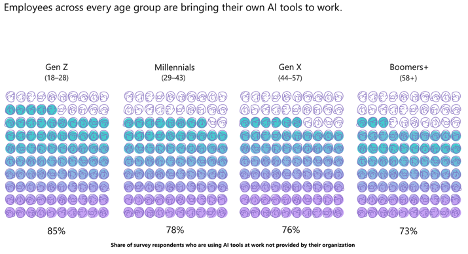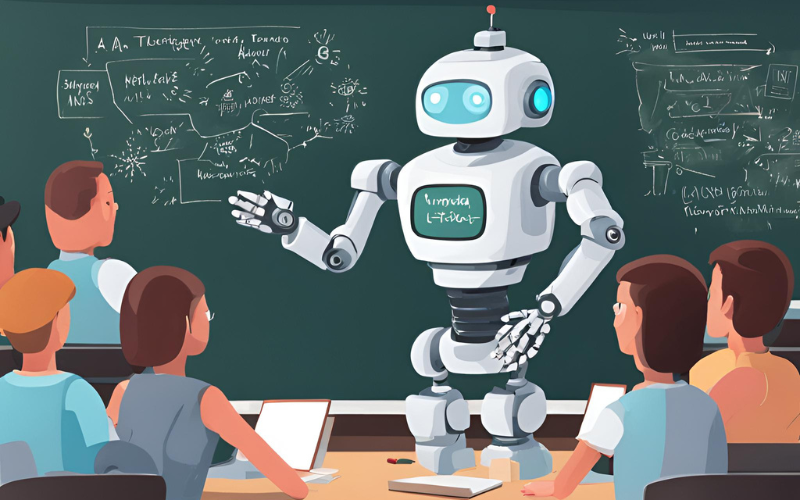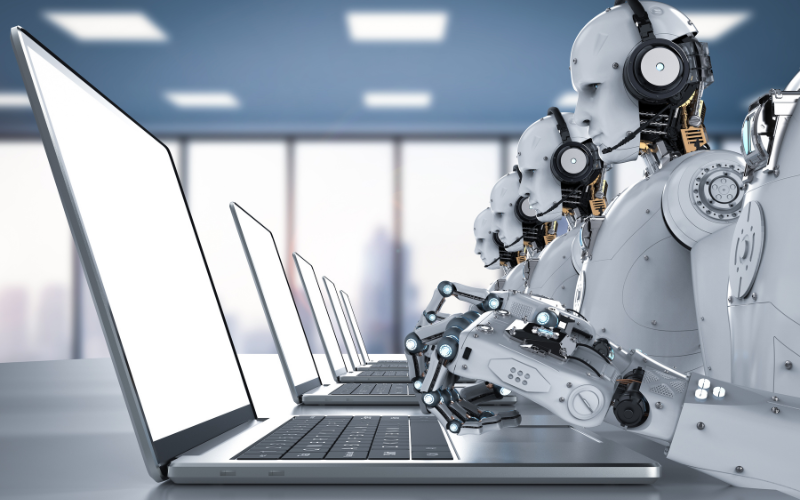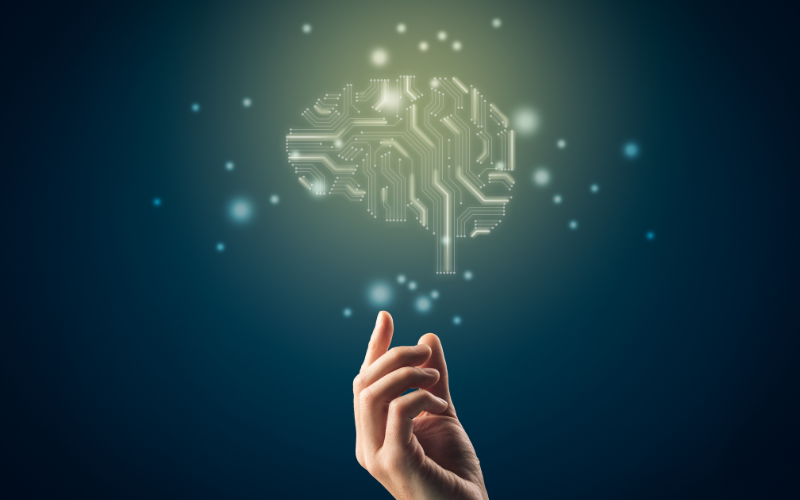A week or two ago, I met a friend for lunch. Bryan manages investment portfolios and is an executive at a well-known investment bank. During our conversation, we discussed artificial intelligence, its impact on education, and the AI skills needed in today’s workforce. I shared with Bryan that I purposefully use a generative AI app for at least 20 minutes daily.
After lunch, I returned home, opened ChatGPT-4o, and entered four prompts. Each prompt related to a topic we discussed at lunch without reaching a conclusion. I emailed the prompts and ChatGPT-4o’s response to Bryan. He was astonished at the response time and the answers. I replied that practice helps.
I have had similar discussions with others about my interest in AI and my use of generative AI tools. I liked the response of one of my CEO friends, who said, “I tell my employees that ‘you don’t have to learn how to use ChatGPT, but your replacement will.’”
My advice is to gain those skills however and wherever you can.
AI Skills Becoming More Important
Last week, the World Economic Forum published an article titled AI skills are becoming more important than job experience. Here’s how job seekers can adapt. Senior writer Andrea Willige reported that a new international study by Microsoft and LinkedIn predicts the rise of AI superusers as the labor market shifts again.
Ms. Willige highlighted that the 2024 Work Trend Index Annual Report surveyed 31,000 people across 31 countries. Three out of four people now use AI at work, a statistic that doubled over the last six months. In fact, 46% of them started using AI less than six months ago.
More importantly, 78% of the employees using AI are bringing their own AI tools into the workplace. These employees believe that AI skills will be necessary to stay competitive in the job market (76%), to get promoted (69%), and to broaden their job opportunities (79%).
Age is not as big of a factor as you might think. The Work Trend Index Report has an excellent graphic that illustrates the percentage of survey respondents using AI tools at work that their company does not provide. While the overall percentage is 78%, as mentioned above, the generational range is 73% to 85% (see graph below).

Ms. Willige writes that the opposite may be true. Two-thirds of CEOs indicated that they would not hire anyone without AI skills. In fact, the CEOs indicated they are more likely to hire a less-experienced candidate with AI skills than a more experienced candidate without AI skills.
The report notes that while most leaders agree AI is necessary, the pressure to show immediate ROI makes leaders move slowly. According to the report’s authors, uncertainty is stalling vision. Nearly 60% of leaders worry their organization’s leadership lacks a plan and vision to implement AI.
According to Ms. Willige, the top three occupations for which people have added AI to their skills on LinkedIn are creatives. The top three are content writers, graphic designers, and marketing managers. The next two are entrepreneurs and business professionals.
According to Ms. Willige, the hiring trend per the 2024 Work Trend Index Report is consistent with PwC’s 2024 AI Jobs Barometer. The Barometer reported that jobs requiring AI specialist skills are growing 3.5 times faster than all jobs combined. Furthermore, PwC’s 500M job ads analysis indicates that AI jobs command up to a 25% wage premium.
Sectors with the highest AI penetration are seeing 4.8 times greater labor productivity growth. According to PwC, increases in labor productivity generate economic growth, increased wages, and better living standards.
AI Power Users Defined
AI power users are ahead of the curve in their AI use. Ms. Willige describes these people as employees who use AI several times a week, making their workload more manageable, boosting their creativity, and helping them focus on the most important work. They are happier and more motivated at work.
What are the habits that make a power user? According to the 2024 Work Trend Index, power users do the following:
- Are nearly 50% more likely to explore how AI can contribute before beginning a new task and 30% more likely to keep trying if they don’t get the perfect response the first time.
- Are 66% more likely to redesign the organization’s entire business processes and workflows using AI tools.
- Experiment with different ways of using AI.
- Use AI for various tasks, including catching up on meetings, analyzing information, designing visual content, brainstorming ideas, and interacting with customers.
- Use AI tools to start their day and get set up for the next day.
I found an alignment between the five habits describing power users and the four principles established by Wharton Professor Ethan Mollick in his book Co-Intelligence. Mollick’s four principles are:
- Always invite AI to the table.
- Be the human in the loop.
- Treat AI like a person (but tell it what kind of person it is).
- Assume this is the worst AI you will ever use.
Mollick wrote that people embracing these principles will be able to adapt to change and remain competitive in a workplace driven by exponential advances in AI.
How Businesses and Schools Prepare for AI

Ms. Willige writes that PwC’s research found that skillsets for AI-exposed occupations are changing 25% faster than in roles where AI is less relevant. Employees adopting some of the power user habits could improve their future career prospects. She adds that the findings indicate that employees and students need more preparation for AI-driven work.
It is not surprising that Ms. Willige would recommend implementing the Education 4.0 Framework, which was developed by experts, practitioners, and employers for the World Economic Forum. The Framework provides eight transformations for learning content and delivery experiences to prepare the next generation for the future of work.
The four content-related transformations are:
- Global citizenship skills, focusing on building awareness about the wider world
- Innovation and creativity skills, focusing on complex problem-solving, analytical thinking, creativity, and system analysis
- Technology skills, focusing on developing digital skills, including programming, digital responsibility, and the use of technology
- Interpersonal skills, focusing on interpersonal emotional intelligence
The four experience-related transformations are:
- Accessible and inclusive learning
- Lifelong and student-driven learning, improving existing skills and acquiring new ones based on individual needs
- Personalized learning, flexible enough to enable each learner to progress at their own pace.
- Problem-based and collaborative learning, closely mirroring the future of work.
Many of these eight transformations in the Education 4.0 Framework mirror recommendations from the 2024 EDUCAUSE Horizon Report. Specifically, EDUCAUSE recommends education approaches including more experiential learning, access to tech courses, and real-world applications and pathways to skills-based learning.
A Few Thoughts
There are different opinions on how fast AI will adapt in the workforce. I’d rather be a business or education professional with AI experience than someone waiting for my employer or school to provide me with specific guidance on which tool(s) to use and how to use them.
You can no longer use the excuse that you can’t afford to use an AI tool when OpenAI made ChatGPT-4o available for free to everyone. Yes, more specialized tools are available; some have monthly access charges. At the same time, many of those tools have a free trial period, and most are no more than $20 per month.
Thanks to more than a few personal and professional connections in the education and education technology sectors, I have had many conversations with seasoned professionals about the future of AI in education and the workforce.
Last week, I participated in a Zoom call with three seasoned AI professionals. They’re somewhat skeptical about the technical capabilities of generative AI, believing that there is more focus on expanding the quantity of content ingested to train the models than on improving the quality of the content and the generative AI technique.
I recently spoke with Joshua Wohle, founder and CEO of Mindstone.com. Mindstone is a community to enhance the practical AI skills of employees beyond certificates. The Mindstone community is built to scale and can enhance and validate the AI skills of individuals, a corporate team, or the entire company. They also organize meetups in major cities around the world.
My discussion with Mr. Wohle included how to stay current with AI tools as the number of generative AI applications increases. We commented that companies may be hesitant to adopt AI because of the constantly evolving technology, a finding confirmed in the Work Trend Index Annual Report.
This period reminds me of when users of the first spreadsheets had an advantage over co-workers without spreadsheet experience. Joshua added that AI training will be in demand until experience catches up with demand. His community embraces skills validation and provides teaching sessions, showcasing experience and learning.
The EDUCAUSE Horizon Report and World Economic Forum Education 4.0 Framework recommend accessible and inclusive learning for AI training and education. While that’s likely to happen over the long term, early learners are likely to be those who are more educated and have access to training regardless of its affordability.
Individuals who adopt Ethan Mollick’s four principles and AI power users’ habits are likely to be the big winners in the short term. They’ll likely be winners in the long term, assuming they continue to increase their AI experiences and learning. Even if your company does not provide AI training, train yourself.
If you don’t feel comfortable training yourself, ask a friend or look for a course offered by Coursera, edX, Udemy, or one of the other providers of online training classes. Interestingly, Mindstone’s offerings are a blend of synchronous and asynchronous online training. Once you are familiar with the technology, practice.
If you are currently a high school or college student, ignore generative AI tools at your own risk. Based on usage statistics, I don’t see how a college student is not exposed to ChatGPT or Claude from peers if not from professors in classes.
According to the PwC report, knowledge work sectors are seeing the highest growth in jobs requiring AI specialist skills. Adding those skills acquired through LinkedIn Learning or Coursera courses to your LinkedIn profile and resume will distinguish a new graduate’s attractiveness to recruiters.











